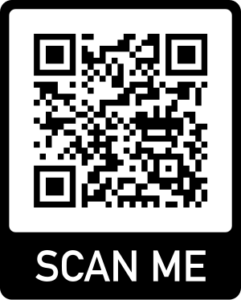Manual scheduling can be a big headache for any employer. What are the best work hours for certain staff members in your workforce? What are the best assignments to give them during those periods? What equipment will they need, and how can downtime be eliminated? How can you best cope with schedule changes at the last minute? What on-call staff is available right now?
Juggling all of those factors — if not more — at the same time would tax any human brain. The good news is that now the gray matter doesn’t have to. Workforce scheduling has never been easier with the arrival of cutting-edge AI-powered task management software.
Advanced AI-based technology enables the fast, accurate scheduling not just of people but also of activities, space in facilities, and time spent on machines. This scheduling approach can improve operations throughout your business or organization. Whether it be manufacturing, retail, education, or even government, predictive schedule software can bring out the best of your team, buoying your organization’s success to whole new heights.
What is predictive schedule software?
Predictability means being able to know what is likely to happen before it actually does. In essence, predictive scheduling models peer into the future to make the right decisions today.
What’s more, software that can predict schedules automates many of these decisions, relieving human staff from the necessity of doing them. Predictive scheduling practices develop the most advantageous employee schedules without all the headaches associated with manual scheduling.
How do these systems work?
How AIs implement predictive scheduling
Trailblazing AI-based systems are capable of surveying oceans of data from past scheduling practices in less time than it takes to inhale. By analyzing these historical trends, the AI identifies patterns that would elude a human being.
This method can determine staffing needs and customer demand in advance, as well as the best ways to fill those needs to optimize productivity. Scheduling becomes quick and easy.
For instance, perhaps your organization historically has struggled with employee availability on Friday evenings, even though customer sales remain high at that time. Next-generation task management software can point out the number of employees who generally work that slot, calculate the right number of staff, and propose the addition of new hourly workers who would be responsible for that period.
But that’s not all. These tools can also propose other ways to eliminate bottlenecks and keep transactions coming in at the fastest clip. Predictive models handle scheduling complexities of all kinds, creating a work schedule designed to reduce labor costs while avoiding understaffing or overstaffing.
These systems also promote job satisfaction for both employees and managers.
Benefit from predictive scheduling tools
By automating the scheduling process to ensure that team members have a predictable schedule and time for their personal lives, these systems support work-life balance while ensuring employee work gets done on time. This helps avoid unnecessary turnover.
New predictive scheduling applications are also a boon for management. If a staff member should fall ill, last-minute changes will need to be made. When the scheduling system is being run by an AI, however, solutions appear in record time.
While advance notice is always nice, it isn’t necessary with AI-based task management software, which can immediately let you know who might be available to fill in, how less urgent work can be moved around, or how to best adjust staffing levels. In this way, these solutions provide the ultimate scheduling flexibility.
Meanwhile, predictive scheduling helps businesses stay compliant with labor law, no matter what cities and states they are located in. Automated scheduling creates timetables in which employees can count on predictable work hours with appropriate breaks even while optimizing workforce management.
However, creating employees’ work schedules in advance is only one of its capabilities. AI-based systems can also present a scheduling solution for facilities and equipment.
Beyond the work schedule: How to optimize operations with AI-based task management
Modern scheduling tools can ensure that all of your business’s resources, not just your human ones, are as productive as possible.
Consider preventive maintenance. Today’s advanced task-management software can track the age and condition of your facilities and gear, ensuring they receive maintenance at just the right time to keep work flowing as smoothly as possible. This means fewer accidents and breakdowns, which translates into more safety and less idle time.
Moreover, effective predictive scheduling systems can monitor real-time conditions even at branches that are far away. If problems threaten to arise, they can warn management and suggest appropriate measures to address the situation. Again, this makes the workplace safer and ensures compliance with laws and regulations that employers must follow.
If that wasn’t already enough, groundbreaking AI-based task management can assess historic climate and weather patterns. This gives business leaders the ability to create contingency plans to protect the business even when emergencies happen, such as a natural disaster.
Workforce scheduling for the future
Predictive scheduling aims to make business better, and that’s exactly what it’s proven to do. Employee scheduling software results in fair scheduling, predictable work schedules, and new scheduling practices that far outperform traditional scheduling methods. These new solutions also improve operations at businesses across the board.
Adopting predictive scheduling is easy and benefits all. For this reason, the time to integrate predictive systems is now.




